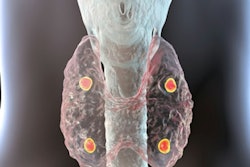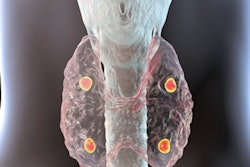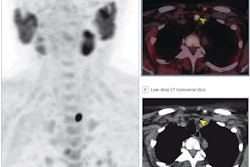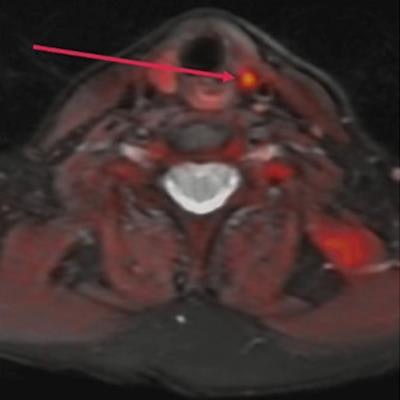
CHICAGO - An experimental PET imaging approach using a radiotracer called F-18 fluorocholine (FCH) appears effective in detecting tumors in patients with primary hyperparathyroidism, according to research presented November 29 at the RSNA annual meeting.
A group at the University of California, San Francisco (UCSF) studied whether FCH-PET could effectively detect parathyroid tumors in patients with primary hyperparathyroidism. The team found that the approach significantly increased the "correct localization rate" (CLR) compared with conventional imaging.
"FCH-PET imaging is valuable for pre-surgical planning for minimally invasive parathyroidectomies," presenter Daniel Thompson of UCSF told attendees.
Primary hyperparathyroidism affects about 100,000 people in the U.S. each year. Women are affected three times more often than men. In a majority of cases, hyperfunctioning adenomas lead to the condition, with complete surgical removal of the glands being the most common treatment.
Ultrasound and sestamibi scintigraphy imaging are the conventional diagnostic imaging approaches, yet they yield significant numbers of false negatives, Thompson said. Conversely, FCH-PET has shown promise in several small European studies exploring its use in this condition, and in this study, the researchers sought to explore its use further, Thompson said.
The researchers enrolled 68 patients (44 women, on average 61.83 years old) with evidence of hyperparathyroidism. Sensitivity and CLR of FCH-PET was compared with pathology for patients undergoing surgery, as well as to those with a comparison sestamibi study.
According to the findings, 62 of the 68 patients had positive FCH-PET scans. Thirty-seven patients went on to have a parathyroidectomy. In patients with pathology (n = 37), the sensitivity was 97% with a CLR of 78%. In 27 patients who had a sestamibi study within 12 months available for comparison, the sensitivity and CLR for FCH PET was 96% and 74% compared with 9% and 7% for sestamibi.
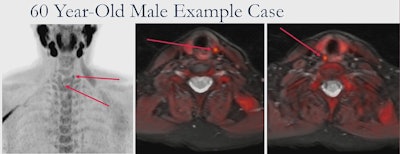 F-18 fluorocholine uptake in parathyroid adenomas in a study participant. Image courtesy of Daniel Thompson.
F-18 fluorocholine uptake in parathyroid adenomas in a study participant. Image courtesy of Daniel Thompson.FCH-PET has a high sensitivity and CLR for parathyroid tumors in patients with primary hyperparathyroidism, Thompson concluded. In a subcomparison of FCH and sestamibi, FCH increased the CLR from 7% to 75%, he added.
"This study, as small as it was, supports FCH-PET imaging to allow more minimally invasive surgeries and thus better outcomes for patients as a result," Thompson said.






